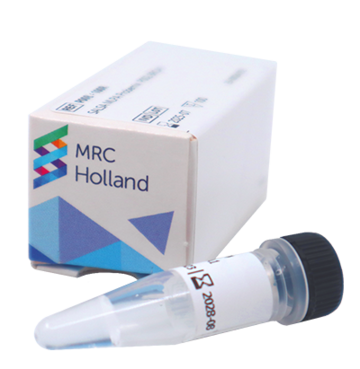CDKL5 deficiency disorder (CDD) is a condition characterized by a broad range of clinical symptoms and severity. The primary symptoms include early-onset epilepsy (starting within the first three months of life), generalized hypotonia, psychomotor development disorders, intellectual disability, and cortical vision disorders. In addition to these primary symptoms, a number of accompanying symptoms have been reported, e.g. autistic features, poor eye contact, repetitive hand movements, vegetative disorders, gastrointestinal problems and distinctive facial features (GeneReviews). The prevalence of CDD is estimated at ~1:40,000-60,000 live births, with females affected four times more than men (Jakimiec et al. 2020). However, the course of disease is usually more severe in male patients.
CDD is also known as early infantile epileptic encephalopathy 2 (EIEE2) and was previously classified as an atypical form of Rett syndrome, i.e. the early-onset seizure variant of Rett syndrome. Rett syndrome and CDD have several common features, including seizures and intellectual disability, although only 23.7% of CDD patients meet clinical criteria for Rett syndrome (Olson et al. 2019). Other signs and symptoms of CDD are distinct from those of Rett syndrome, and CDD is now considered a separate clinical entity (Fehr et al. 2013).
FOXG1 syndrome is a condition characterized by impaired development and structural brain abnormalities. Affected infants are small at birth, and their heads grow at a reduced rate, leading to microcephaly by early childhood. The condition is associated with a particular pattern of brain malformations that includes a thin or underdeveloped corpus callosum, reduced gyri on the surface of the brain, and a reduced amount of white matter. FOXG1 syndrome affects most aspects of development, and children with the condition typically have severe intellectual disability. Abnormal or involuntary movements, such as jerking movements of the arms and legs and repeated hand motions, are common, and most affected children do not learn to sit or walk without assistance. Babies and young children with FOXG1 syndrome often have feeding problems, sleep disturbances, seizures, irritability, and excessive crying. Affected individuals may have autism spectrum disorder, which is characterized by limited communication and social interaction, including poor eye contact and a near absence of speech and language skills.
FOXG1 syndrome was previously described as a congenital variant of Rett syndrome. However, Rett syndrome is diagnosed almost exclusively in females, while FOXG1 syndrome affects both males and females. Because of these differences, physicians and researchers now usually consider FOXG1 syndrome to be distinct from Rett syndrome.
| Condition |
Genes |
Probemix and coverage |
Remarks |
| Classic Rett syndrome |
MECP2
(4 exons)
|
P015-F2: Each exon
|
- |
| MECP2 duplication syndrome |
MECP2
(4 exons)
|
P015-F2: Each exon
|
- |
| Atypical Rett syndrome |
MECP2
(4 exons)
|
P015-F2: Each exon
|
- |
|
NTNG1
(6 exons)
|
P189-C2: Each exon
P015-F2: Exons 2, 3, 5, 6
|
Exon 3, 5 and 6 probes in P015 have the same ligation site as probes in P189. |
| CDKL5 deficiency disorder |
CDKL5
(21 exons)
|
P189-C2: Each exon
P015-F2: Exons 3, 6, 9, 10
|
Probes in P015 have the same ligation sites as probes in P189. |
| Early infantile epileptic encephalopathy 1 |
ARX
(5 exons)
|
P189-C2: Each exon
P015-F2: Exons 1, 5
|
Probes in P015 have the same ligation sites as probes in P189. |
| FOXG1 syndrome |
FOXG1
(1 exon)
|
P189-C2: Exon 1 and upstream region
|
- |





